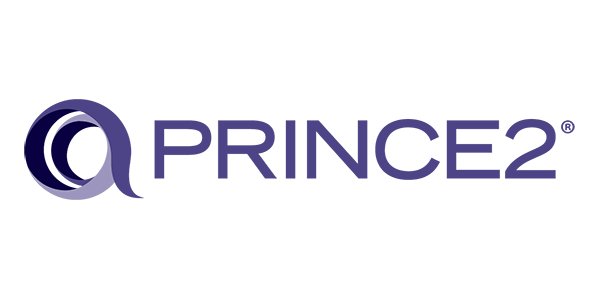PRINCE2 (Projects IN Controlled Environments) is a widely-accepted project management methodology, which acts as a best practice guide for public and private sector organizations. The framework was developed by the UK government and is still used extensively by them to facilitate effective project management. Its adoption has spread to private sector companies all around the world as well. As a framework, PRINCE2 integrates principles, processes and themes, and the project environment. Taken together, all these address the planning, delegation, management, and control of the six aspects of project performance – time, cost, quality, risk, scope, and benefits.
The 7 PRINCE2 Principles
A guide that takes responsibility to follow good practices which determine whether the project is managed genuinely by utilizing PRINCE2. A flexible method, PRINCE2 consists of 7 principles and completes a project when applied all of them and tailored to suit the type and size of the project.
The most practiced methodology, the PRINCE2 principles are composed so that it adds to the success of a project without involving it with any trouble along with the management. The subjects, procedures, and product descriptions depict what completes the project.
1. PRINCE2 Principles – Continued Business Justification
This confirms that there is a justifiable reason to begin the project which, though it may evolve, should be valid throughout its life.
For instance, in an AXELOS case study on ‘Using ITIL and PRINCE2 Together’, a company was looking to establish an off-shore service desk at minimum cost, in addition to its existing one, to ensure greater capacity ahead of an IT product release. Along the way, other perceived benefits emerged, such as extra cover for disaster recovery for business continuity; however, these would come at an extra cost and would need additional time to set up. The project manager and the project board chose to stick to the original business case justification and did not authorize any additional expenditure. The cost of missing the deadline was deemed to be more expensive than the cost of retro-fitting disaster recovery at a later stage.
2. PRINCE2 Principles – Learn from Experience
Lessons from the past should be applied in ongoing projects. Lessons from ongoing projects should be documented for future use. It is a common practice for companies to recruit a project manager based on his or her experience in a similar project.
3. PRINCE2 Principles – Defined Roles and Responsibilities
The roles and responsibilities of the different levels of the project team are to be defined so as to satisfy the interests of primary stakeholders.
For instance, some of the common roles assigned in a project are project manager, project sponsor, project board, project team members, project administrator, and so on.
4. PRINCE2 Principles – Manage by Stages
According to PRINCE2 best practice guidance, a project should be broken into at least two stages for better management and control. It is said that planning the number of stages needs to take into account risk and cost.
5. PRINCE2 Principles – Manage by Exception
Tolerances are set for different project objectives so as to optimize delegation of authority.
6. PRINCE2 Principles – Focus on Products
PRINCE2 advocates an output-oriented approach to a project and to that end, product definitions, quality, and other criteria are integral to achieving successful outcomes. Some experts, in fact, suggest integrating PRINCE2 with Six Sigma for process improvement projects.
According to a template made available by AXELOS, the product description should cover the following points: purpose, composition, derivation, format, presentation, development skills required, quality criteria, quality tolerance, quality method, quality skills required, and quality responsibilities.
7. PRINCE2 Principles – Tailor to Suit the Project Environment
The PRINCE2 project management methodology is designed to be customizable to the specific needs of the project and its environment.
The 7 Themes of PRINCE2 Methodology
It describes the aspects of project management that must be addressed continually and in parallel throughout the project. Seven themes explain the specific treatment required by PRINCE2 for various project management disciplines. They are set up towards the start of the project and then monitored until the end. Projects are kept on a track that continuously addresses these topics.
1. Business Case Theme
The Business case theme associated with the continued business justification principle gives information about whether a task is advantageous and achievable.
2. Organization Theme
The organization theme defines the roles and responsibilities that involve project managers to have everybody’s jobs and obligations on record.
3. Quality Theme
The quality theme is identified with the emphasis on the principles of the products. Quality can be a conceptual idea, so defining it towards the start of a project is imperative to keeping the work on track.
4. Plans Theme
The Plans theme describes the proficiency of the targets, it focuses on the products, timescale, cost, quality, and advantages.
5. Risk Theme
The risk theme is the reason to distinguish, access, and control uncertain events during a project. This theme gets recorded in a risk log. Adverse risks are called threats, and positive ones are called opportunities.
6. Change Theme
The change theme is about taking care of the progress on-demand and issues that emerge amid the project. The thought isn’t to avoid changes, however, to get them conceded to before execution.
7. Progress Theme
The progress theme establishes the tools to monitor and compare actual accomplishments against those planned. It provides a forecast for the project objectives and the project’s continued viability and controls any unacceptable deviations.
The 7 Processes of PRINCE2 Methodology
It describes the evolution from the pre-project activity of getting started, throughout the project life-cycle until the end of the project. Each process has agendas of suggested activities, products, and related duties. The project manager supervises the seven techniques and gets them affirmed by the task board. Here is a breakdown of each stage.











0 comments:
Post a Comment